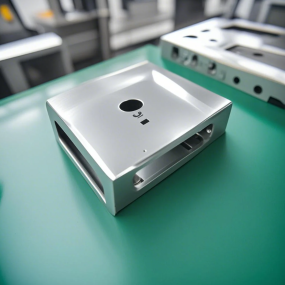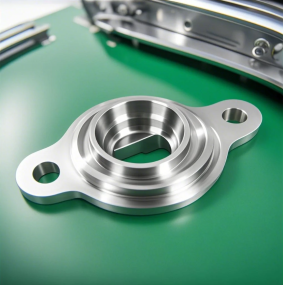Firstly, CNC Machining is suitable for precision component processing in aviation, navigation, automotive, medical, industrial and other industries. CNC machining has high precision, fast efficiency, and stable quality. As the saying goes, you can do anything that flies in the air, runs on the ground, or swims in the water!
The CNC machining center adopts numerical programming, and the machining program is pre edited and entered into the CNC operating system. Processed by operators according to the process. Machine tools are also divided into ordinary CNC machining centers, 3-axis, 4-axis, 5-axis, and composite machining centers.
CNC machining centers can perform complex precision component machining with multi axis linkage, and can also be used as reference for research and development companies to produce metal or plastic prototypes.
CNC machining centers can process aluminum profiles, stainless steel, zinc alloys, acrylic, ABS, and various plastic raw materials. High compatibility. Its technology can be divided into precision turning, precision drilling, precision milling, precision grinding, grinding, and post-processing.
Precision machining and drilling: Many precision light alloy parts use this method to process workpieces (aluminum alloy or magnesium alloy), with a coordinate accuracy of up to 2 microns.
Precision milling cutter: used for machining complex shaped aluminum or beryllium alloy structural components. Based on the precision of the machine tool's guide rail and spindle, high mutual positional accuracy can be obtained. By using carefully ground diamond cutting heads for high-speed milling, the correct mirror surface can be obtained.
Precision machining and grinding: used for machining shaft or hole components. Most of these components are made of hard steel with high hardness.
Grinding: Using the principle of mutual grinding of mating components to selectively process irregular protrusions on the processed surface, the accuracy can reach 0.01mm.



 Spanish
Spanish Arabic
Arabic French
French Portuguese
Portuguese Belarusian
Belarusian Japanese
Japanese Russian
Russian Malay
Malay Icelandic
Icelandic Bulgarian
Bulgarian Azerbaijani
Azerbaijani Estonian
Estonian Irish
Irish Polish
Polish Persian
Persian Boolean
Boolean Danish
Danish German
German Filipino
Filipino Finnish
Finnish Korean
Korean Dutch
Dutch Galician
Galician Catalan
Catalan Czech
Czech Croatian
Croatian Latin
Latin Latvian
Latvian Romanian
Romanian Maltese
Maltese Macedonian
Macedonian Norwegian
Norwegian Swedish
Swedish Serbian
Serbian Slovak
Slovak Slovenian
Slovenian Swahili
Swahili Thai
Thai Turkish
Turkish Welsh
Welsh Urdu
Urdu Ukrainian
Ukrainian Greek
Greek Hungarian
Hungarian Italian
Italian Yiddish
Yiddish Indonesian
Indonesian Vietnamese
Vietnamese Haitian Creole
Haitian Creole Spanish Basque
Spanish Basque











